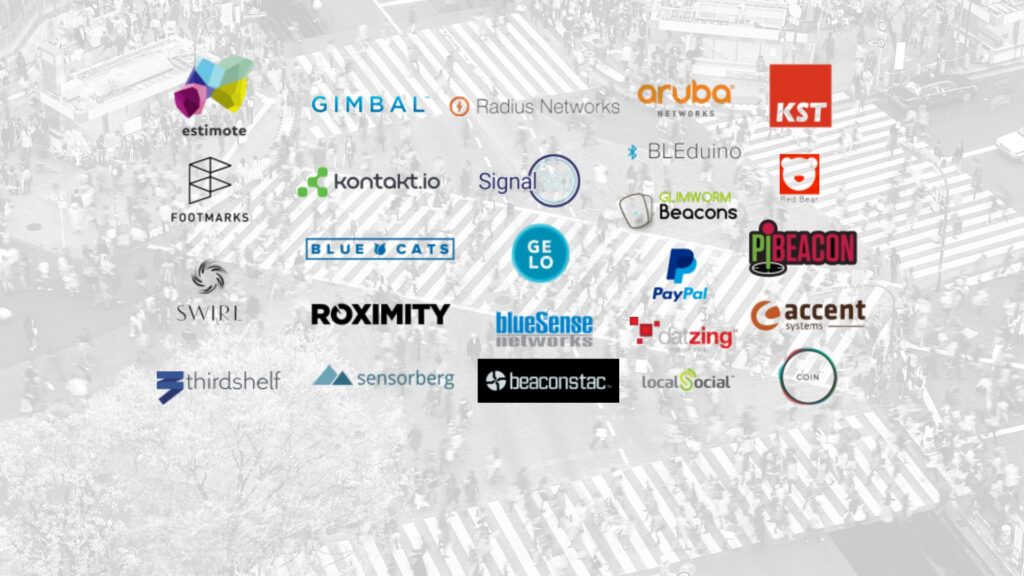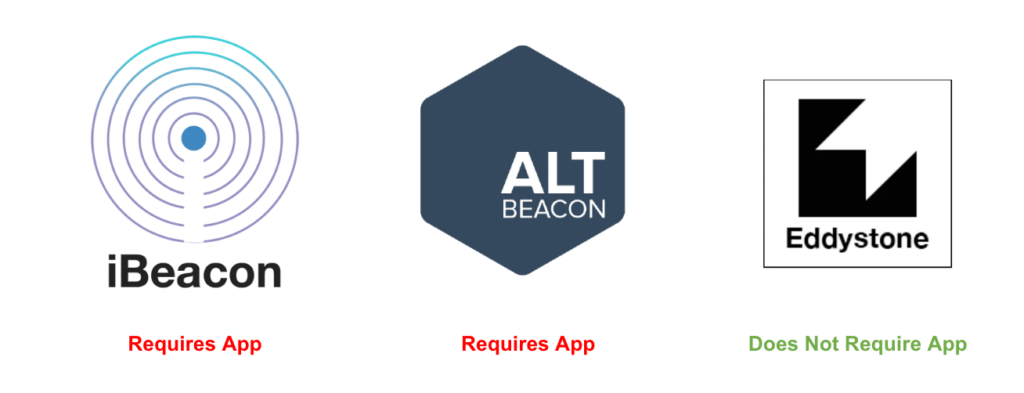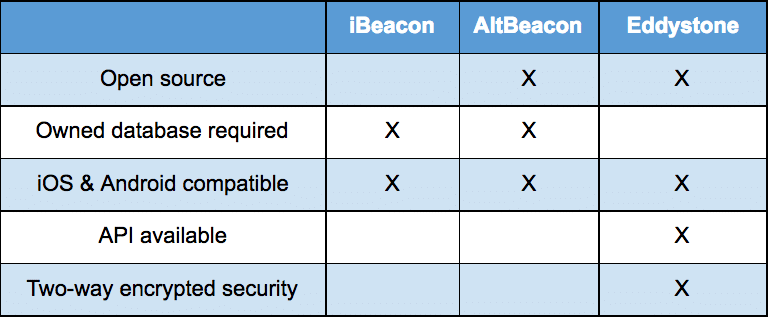Without question, Bluetooth low energy (BLE) beacon technology will continue to gain momentum in the foreseeable future. Massive growth is a reality not only for brands deploying beacon-based marketing campaigns, but for technology companies manufacturing hardware, developing software and offering managed services to meet the demand and varying needs across industries.
According to ABI Research, the BLE beacon market is likely to more than double in 2016 and is on pace to hit 400 million shipments by 2021. While staggering, these numbers alone aren’t justification to jump on the beacon bandwagon; the capabilities beacons provide ARE. Beacon technology allows you to track digital marketing initiatives to physical store visits and purchases, and store visits to online conversions! Â
The devices work by transmitting a signal to mobile phones and tablets via Bluetooth (for more on the basics, check out our roundup of beacon marketing resources). Traditionally, that signal results in a push notification. However, there’s a lot that needs to happen for this process to work. The user must have:
- Installed your app
- Enabled push notifications as well as beacon-driven notifications
- Turned on Bluetooth
That’s a lot to ask AND presupposes you have an app. Fortunately there’s a solution for those without. In this post, we’ll look at the beacon technology and solutions available to marketers without a mobile app and the various tactical capabilities they currently provide.
Protocol matters
Marketers ready to take the leap are met with an astounding number of technology options. Evaluating which product and/or service is the right fit can be difficult in an ever-expanding marketplace.
Before assessing beacon technology providers, take a step back to gain an understanding of which beacon protocol fits your needs best, as capabilities vary. A beacon protocol is the communication standard a beacon uses to broadcast data. There are three primary protocols: Apple’s iBeacon, Radius Networks’ AltBeacon and Google’s Eddystone. If you do not have a proprietary app, the choice is simple:
Beyond this difference, there are others to be aware of:
With Eddystone, Google has addressed barriers to entry head on by leveraging its ubiquitous app network. Google Play Store, Google Chrome, Google Maps and Google Now make it possible for marketers to extend reach beyond users already aware of your brand by making your brand discoverable.
Eddystone has four frame types and it is possible for one beacon to transmit all simultaneously:
- Eddystone-UID – Engages an app
- Eddystone-URL – Engages the “Physical Web”
- Eddystone-TLM – Transmits telemetry (TLM) sensor and administrative data about the beacon itself, such as battery level, temperature, etc.
- Eddystone-EID – Higher security frame type making it possible to send AND receive information to/from users
Eddystone-URL with Google Chrome is the combination that allows marketers to take advantage of beacon technology without an app. This frame type enables an object in the physical world to send out its own web address. Rather than searching for a specific term, a user can swipe down from the top of the browser to discover URLs transmitted by nearby beacons. Clicking a URL opens the page in the browser.
Buying reach from third-party app networks
Few people are aware of this capability, or even what the Physical Web is for that matter. Another option for deploying beacon technology without an owned app is to use an app network. Companies like Gimbal and Footmarks have created substantial networks with well-known apps through which they can provide their customers broad exposure.
To envision how this works, let’s say a popular couponing mobile app is a partner in a third-party app network. You’ve placed beacons in your retail stores and are targeting users with the couponing app installed. If a user with the app walks by one of your beacons, you can deliver a push notification OR (potentially) passively grab the advertising ID and push it into a custom audience in near real-time for retargeting in Facebook and Twitter down the road.
Not only does a third-party app network open up an alternative avenue to pilot a beacon program, it provides marketers the ability to target users based on a specific app’s demographic and psychographic user base.
Keep in mind, beacons don’t need to be stationary. Think about the persona modeling that can be done as you walk through an airport, for example, carrying a beacon. An extensive app network could offer you the ability to easily build custom audiences, to push those audiences into Facebook and to quickly begin parsing out demographics and psychographics based on the user makeup.
Comparing the tech
Eddystone-URL and third-party app networks are both terrific options for brands lacking apps (and the inclination or resources to develop one). When deciding on a technology, keep the following advantages and disadvantages in mind:
Eddystone-URL
- Pros: Faster time-to-market, lower cost, you own the brand experience
- Cons: Little knowledge of the Physical Web among the general population, technology currently requires some configuration and engagement from the end user
App Networks
- Pros: User base is already developed, you can target based on app demographics/psychographics
- Cons: Higher cost as it is typically a managed service (although inroads are being made to put control into marketers’ hands with DIY UIs)
Now’s the time to test
Right now it’s the Wild West – you can put beacons practically anywhere. As popularity and use grows, expect stricter regulations. Think about drones when they first came out: Owners flew them to all sorts of questionable locations (sorry, didn’t know I couldn’t do that). Now there are strict regulations for flying drones in certain airspace.
The beacon technology landscape is constantly evolving. The tech will grow in capabilities and beacon companies will pop up and slide off the map. One thing is for sure: You don’t want to be testing this technology a year from now. Identify a specific use case, test early, refine and scale. Contact us today to get started piloting and/or evolving your beacon strategy.











